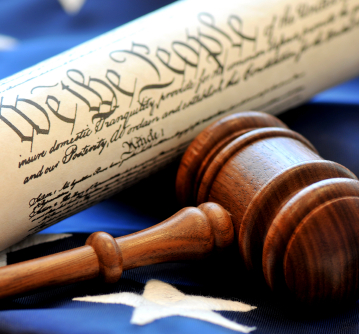 A recent decision before the 1st DCA was filed June 1, 2012. The case before the court was Harry Henderson v. State of Florida. Mr. Henderson was appealing his convictions of possession of a firearm by a convicted felon and fleeing or attempting to elude a Jacksonville Police Officer. The two issues presented before the Court were whether the Officer’s had reasonable suspicion or Probable Cause to stop his vehicle based upon the fellow officer rule and whether the state had proved the constructive possession of the firearm.
A recent decision before the 1st DCA was filed June 1, 2012. The case before the court was Harry Henderson v. State of Florida. Mr. Henderson was appealing his convictions of possession of a firearm by a convicted felon and fleeing or attempting to elude a Jacksonville Police Officer. The two issues presented before the Court were whether the Officer’s had reasonable suspicion or Probable Cause to stop his vehicle based upon the fellow officer rule and whether the state had proved the constructive possession of the firearm.
The facts of this case are straightforward. On or about June 24, 2010, a U. S. Marshall radioed into Jacksonville Police Office for assistance in pulling over an armed homicide suspect who was driving through Duval. A Jacksonville Sheriff’s Officer responded to the request. The JSO Officer turned on his light and siren and proceeded behind the suspect. The suspect began to slow but remained on the road for another one or two miles. At anytime the suspect could have safely pulled the vehicle into the shoulder. The suspect did not speed or break any traffic laws. When he finally stopped a loaded .45 was found under the driver’s seat of the vehicle. The suspect was the sole occupant of the vehicle.
The first issue before the court is whether the Officer’s had reasonable suspicion or Probable Cause to stop the vehicle based solely upon the Fellow Officer Rule. The Fellow Officer Rule basically allows one Officer’s knowledge to be imputed upon another Officer, even if the second officer did not have personal knowledge of the facts. However, in this case, there were not any evidence or information to be imputed upon the JSO so as to give probable cause. The JSO Officer stated he stopped the suspect based upon the Marshall’s request. The Court rejected the State’s argument for the Fellow Officer Rule stating there was no evidence or information to be imputed. Therefore, the Officer’s lacked Probable Cause or reasonable Suspicion to stop the suspect.
The Court stilled affirmed the conviction, not based upon the Fellow Officer Rule, but upon Probable Cause was established after the suspect attempted to flee or allude the officers for that one or two miles after the lights and sirens were activated. The Court reasoned that “because [supect’s] act of fleeing or attempting to elude [JSO] and the other officers obviates the necessity of determining whether there was suspicion or probable cause for the initial attempt to stop.” Therefore, if the suspect had stopped within a reasonable amount of time, there would not be enough evidence to justify the stop.
The second issue before the Court was whether the suspect had constructive possession of the firearm. The suspect contends the state failed to prove possession of the firearm because the car was a rental and used by several other persons. However, the Court ruled the suspect’s contentions merely established a question for the jury to decide the weight of the evidence and make a determination.
Therefore, the Court affirmed both convictions. The Officer’s had gained reasonable suspicion when the suspected attempted to elude or flee and the evidence presented regarding the possession of a firearm created a question for the jury and not an issue for appeal.
 Jacksonville Criminal Defense Lawyer Blog
Jacksonville Criminal Defense Lawyer Blog

